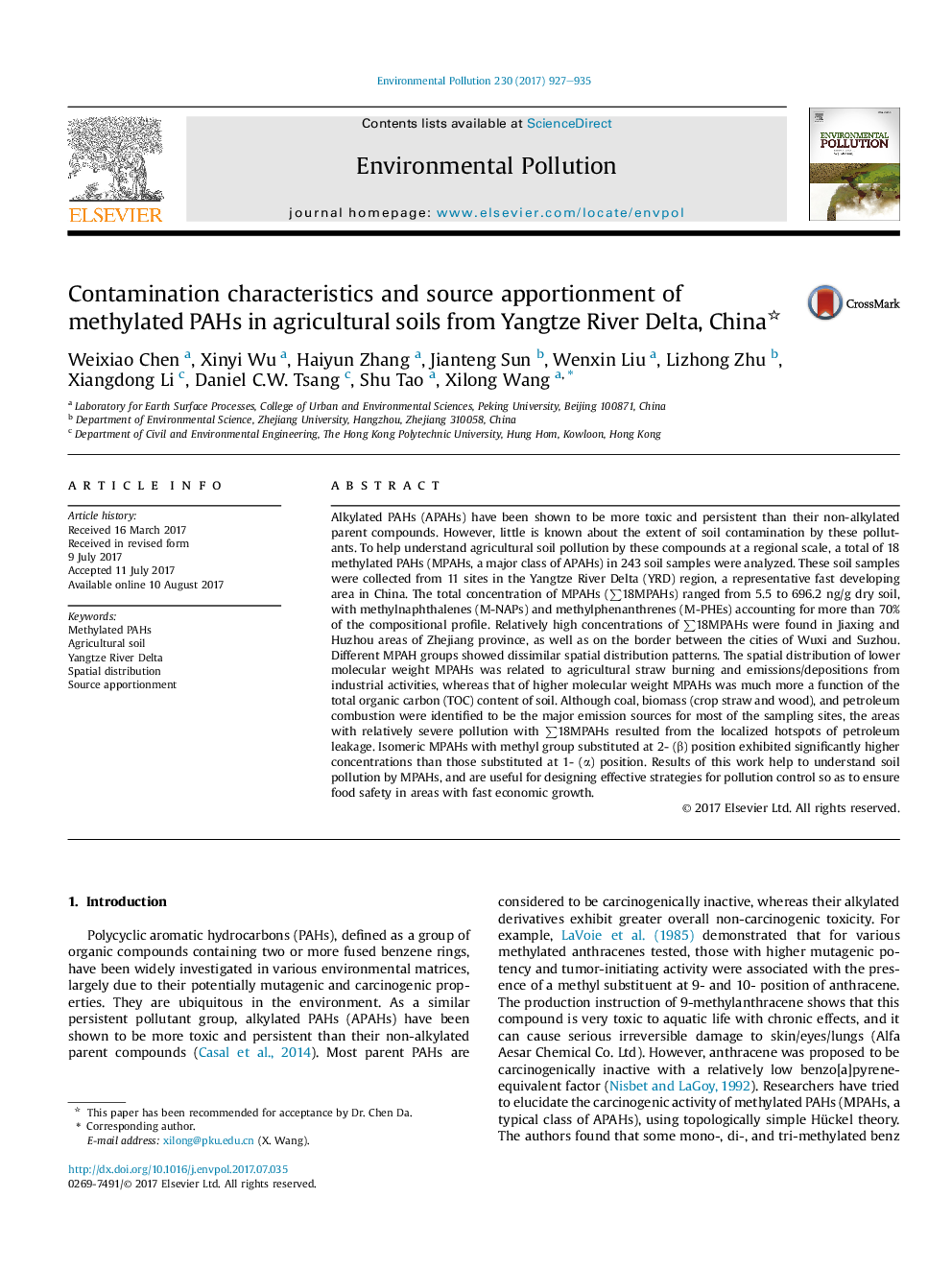| Article ID | Journal | Published Year | Pages | File Type |
|---|---|---|---|---|
| 5748737 | Environmental Pollution | 2017 | 9 Pages |
â¢Several 2-4 rings methyl-PAHs were investigated in soils from Yangtze River Delta.â¢Higher levels of â18MPAHs were in Jiaxing, Huzhou and border of Wuxi and Suzhou.â¢Different molecular-weight MPAHs showed dissimilar spatial distribution patterns.â¢Relatively severe pollution of â18MPAHs was mainly from petroleum leakage.â¢Some isomeric MPAHs with methyl at specific site were much higher than others.
Alkylated PAHs (APAHs) have been shown to be more toxic and persistent than their non-alkylated parent compounds. However, little is known about the extent of soil contamination by these pollutants. To help understand agricultural soil pollution by these compounds at a regional scale, a total of 18 methylated PAHs (MPAHs, a major class of APAHs) in 243 soil samples were analyzed. These soil samples were collected from 11 sites in the Yangtze River Delta (YRD) region, a representative fast developing area in China. The total concentration of MPAHs (â18MPAHs) ranged from 5.5 to 696.2 ng/g dry soil, with methylnaphthalenes (M-NAPs) and methylphenanthrenes (M-PHEs) accounting for more than 70% of the compositional profile. Relatively high concentrations of â18MPAHs were found in Jiaxing and Huzhou areas of Zhejiang province, as well as on the border between the cities of Wuxi and Suzhou. Different MPAH groups showed dissimilar spatial distribution patterns. The spatial distribution of lower molecular weight MPAHs was related to agricultural straw burning and emissions/depositions from industrial activities, whereas that of higher molecular weight MPAHs was much more a function of the total organic carbon (TOC) content of soil. Although coal, biomass (crop straw and wood), and petroleum combustion were identified to be the major emission sources for most of the sampling sites, the areas with relatively severe pollution with â18MPAHs resulted from the localized hotspots of petroleum leakage. Isomeric MPAHs with methyl group substituted at 2- (β) position exhibited significantly higher concentrations than those substituted at 1- (α) position. Results of this work help to understand soil pollution by MPAHs, and are useful for designing effective strategies for pollution control so as to ensure food safety in areas with fast economic growth.
Graphical abstractDownload high-res image (453KB)Download full-size image
